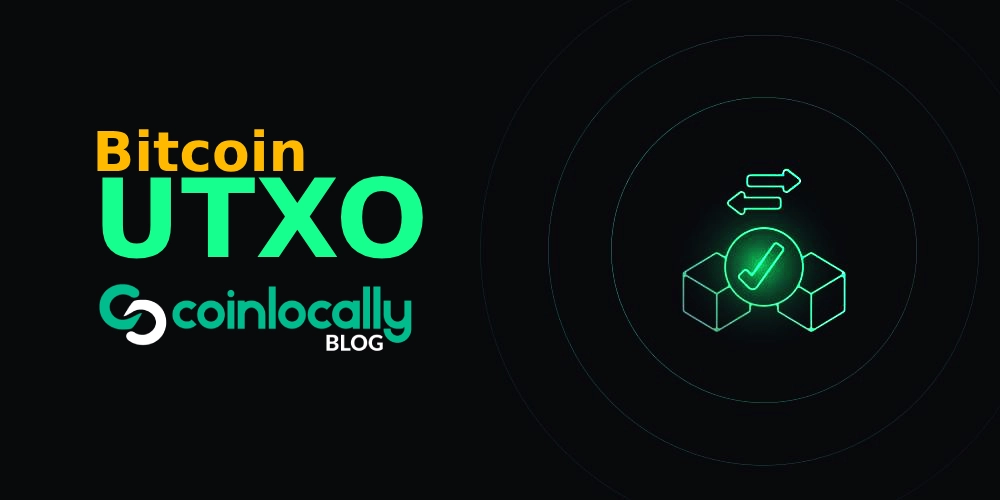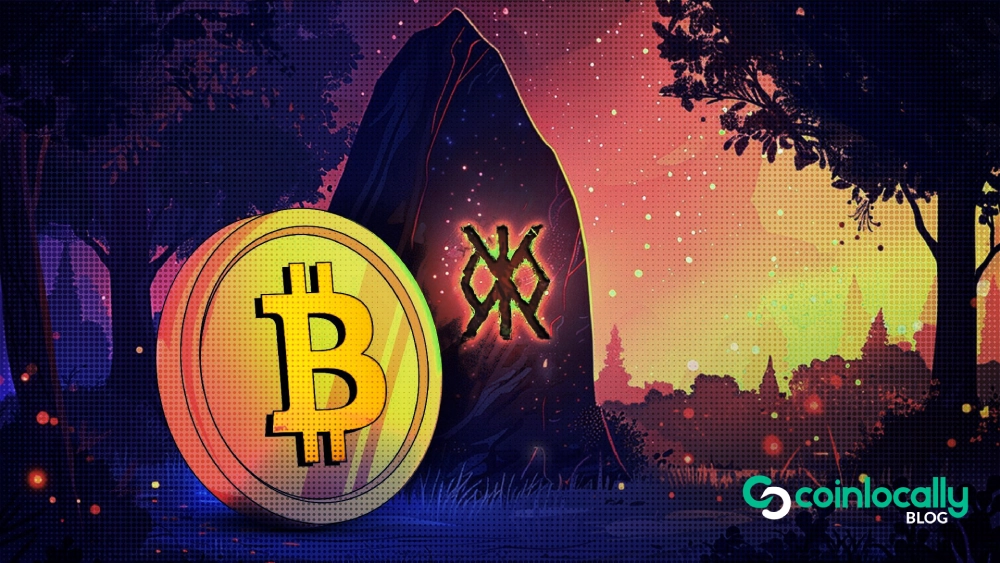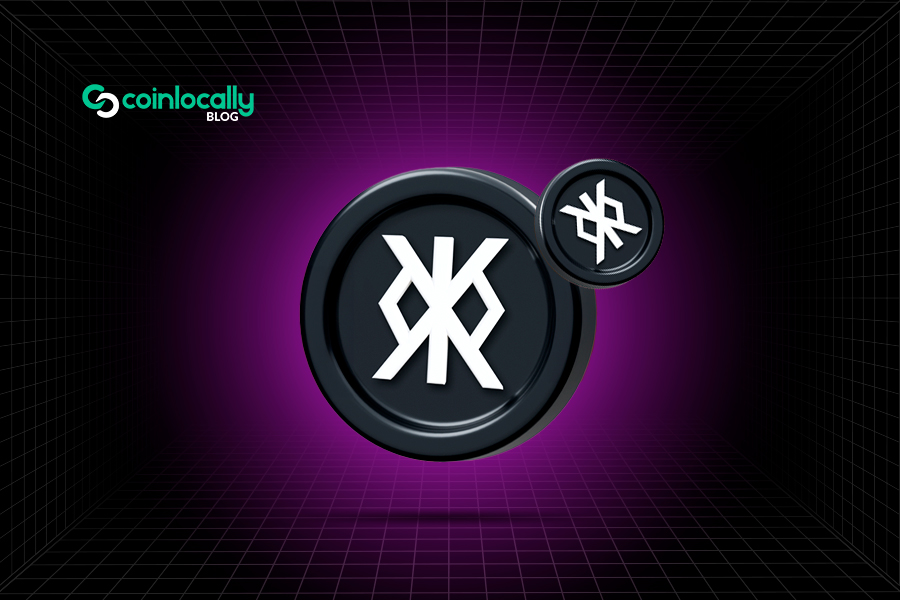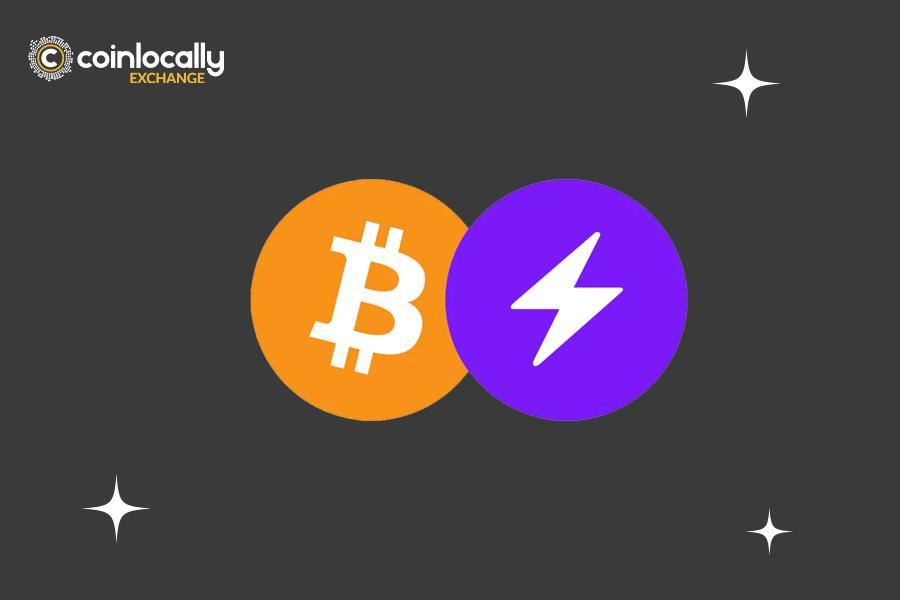Pioneering cryptocurrency continues to evolve beyond its initial conception of digital cash. While often seen primarily as a store of value, innovation on the network has expanded its capabilities. One significant development is the advent of fungible tokens on Bitcoin, notably through protocols like BRC-20 and the newer Runes protocol.
Runes, developed by Casey Rodarmor, the same mind behind Bitcoin Ordinals, emerged to enable the creation, minting, and transfer of Bitcoin-native digital commodities. Introduced at block 840,000, coinciding with the Bitcoin halving, Runes aim to offer a more efficient and integrated approach to fungible tokens on the network compared to their predecessors.
Table of Contents
What is the Bitcoin Runes Protocol?
At its core, the Bitcoin Runes protocol provides a standard for issuing fungible tokens directly on the blockchain. Unlike earlier methods that often relied on meta-protocols built on top of Bitcoin, Runes integrate natively using Bitcoin’s existing transaction model, specifically the Unspent Transaction Output (UTXO) model. This native integration means the data for Runes gets stored inside the OP_RETURN field of a Bitcoin transaction.

Bitcoin’s UTXO
Bitcoin’s UTXO model functions like managing physical change. When a user holds a Bitcoin balance, their wallet manages a collection of discrete UTXOs, each representing an amount of satoshis (the smallest unit of Bitcoin). Runes leverage this model, with token balances associated with these UTXOs. This approach contrasts with protocols that may attach data to individual satoshis or require managing balances off-chain or through separate layers.
The protocol uses “runestones,” which are messages embedded in Bitcoin transaction outputs, typically starting with OP_RETURN. These runestones are decoded to parse instructions related to Runes. A single transaction can contain at most one runestone. This runestone can perform several actions: etching a new rune, minting units of an existing rune, and transferring runes from the transaction’s inputs to its outputs.

Key Processes: Etching, Minting, and Transferring
Understanding how Runes work involves knowing three primary processes:
Etching
This is the act of creating a new Rune. Etching defines the fundamental properties of a Rune, and once set, these properties become immutable, even for the etcher. When etching, creators set the Rune’s name, divisibility, symbol, potential premine, and terms for any open mint.
Minting
If a Rune is etched with an “open mint,” anyone can create a transaction to claim a fixed amount of new units of that Rune, subject to the terms defined during etching. The mint terms can include limits such as a total cap on the number of mints or a specific block height range during which minting is allowed. Minting is essentially claiming units of an existing, openly available Rune.
Transferring
Runes move between users through Bitcoin transactions. When a transaction’s inputs contain Runes, or when new Runes are created via a premine or Mint, the minting that transaction dictates how those Runes are distributed to the transaction’s outputs. Runestones can contain “edicts,” which specify a Rune ID, an amount, and an output number, allocating runes to specific outputs. After processing edicts, any remaining unallocated runes transfer to a default output, typically the first non-OP_RETURN output, though a “pointer” can specify an alternative default.
Malformed runestones, termed “cenotaphs,” can occur due to technical errors. Transactions containing cenotaphs result in the burning of any Runes involved, and any runes etched in such transactions become unmintable. This mechanism serves as an upgrade path, ensuring that older clients interpret malformed runestones as burning events rather than misinterpreting the location of tokens.
Defining a Rune: Name, Divisibility, Symbol, and Terms
When etching a Rune, creators define its identity and behavior. Key properties include:
- Name: A unique ticker consisting of uppercase letters A through Z. Names can also include spacers (represented as bullets) for readability, but uniqueness relies solely on the sequence of letters. The length of permissible names decreases over time, starting with 13-26 characters and gradually unlocking shorter names every four months until the next halving.
- Divisibility determines how finely a Rune can be divided, expressed as the number of decimal places allowed. A Rune with divisibility 0 is indivisible, while a Rune with divisibility 2 can be divided into hundredths.
- Symbol: An optional single Unicode character displayed after the quantity of the Rune. A generic currency sign (¤) is used if no symbol is set.
- Premine: The etcher can optionally allocate a certain amount of the newly created Rune to themselves during etching.
- Terms: If a Rune is intended for open minting, the etcher sets terms governing how and when users can mint units. These terms can include a maximum cap on the total number of mints, a fixed amount minted per transaction, and start/end block heights or offsets defining the minting period.
Once etched, a Rune’s properties are permanently set and cannot be changed.
Bitcoin Runes vs. BRC-20
Runes was designed as a direct competitor and improvement upon Bitcoin’s earlier BRC-20 token standard. Both protocols enable fungible tokens, but differ significantly in their technical implementation and characteristics.
| Feature | BRC-20 | Runes |
|---|---|---|
| Design | Meta-protocol on top of Ordinals, adding complexity. | Specifically tailored for fungible tokens, designed for simplicity. Does not inherit Ordinals’ complexities. |
| Tech | Released as an experimental specification, the community implemented it. | Released with a detailed specification and reference implementation. |
| Data Storage | Uses witness data (up to 4MB), leading to higher on-chain storage. | Uses the OP_RETURN field (80 bytes), which is more efficient. |
| Efficiency | Requires two on-chain transactions per transfer. | Users transfer via everyday Bitcoin transactions; only one transaction is needed per transfer. |
| Distribution | Open Mint Minte created, anyone can Mint. | GMinter flexibility; supports open-mints, pre-mining, delayed mints, etc. |
| Compatibility | Primarily requires Ordinals-supported wallets. | UTXO support increases compatibility with wallets, L2s, bridges, and DeFi apps. It is also compatible with the Lightning Network. |
| UTXO Management | Contributes to “junk” UTXOs that can bloat the network. | Designed to minimize UTXO bloat and improve efficiency. Leverages existing UTXOs more effectively. |
| Relation to Ordinals/Inscriptions | A meta-protocol on top of Ordinals. | Technically, it is entirely unrelated to Ordinals, Inscriptions, and BRC-20 tokens. |
| Cost per Transaction | Generally lower than Runes (based on specific market conditions and sources’ data). | Generally higher than BRC-20 (based on specific market conditions and sources’ data). |

Protocol of Bitcoin Runes
Runes operate on a separate protocol from BRC-20. While BRC-20 requires additional infrastructure to support Ordinals before supporting BRC-20s, Runes are native to the Bitcoin mainnet and work with any protocol compatible with standard Bitcoin transfers via UTXOs. Runes offer improved block space efficiency because transfers require only one on-chain transaction compared to two for BRC-20. This efficiency aims to reduce blockchain bloat and the likelihood of spiking fees. Despite the differences, both protocols have seen considerable activity and contributed to Bitcoin’s transaction fees.
Motivation and Use Cases (Bitcoin Runes Meaning)
Casey Rodarmor himself described Runes as a “form of degenerate gambling” and not the “future of finance,” suggesting their primary purpose is to facilitate “meme” tokens on Bitcoin. This acknowledges meme coins’ significant role in attracting attention and users across various blockchain networks. Runes represent an attempt to bring this “meme coin season” to the original Bitcoin blockchain more simply and natively than previous efforts like BRC-20.
Beyond memecoins, the design of the Runes protocol opens the door for broader use cases by enabling native fungible tokens on Bitcoin. Potential applications include:
DeFi (Decentralized Finance)
Runes introduces potential for increased DeFi activity on Bitcoin. By creating fungible tokens using existing Bitcoin infrastructure, Runes are suitable for building platforms for lending, yield products, and other DeFi initiatives. Analysts suggest Runes could help Bitcoin DeFi “close the gap” on Ethereum and Solana.
Digital Collectibles and NFTs
While Ordinals focuses on inscribing unique data onto individual satoshis (an NFT-like approach), Runes can also facilitate proof of ownership for digital collectibles. Some sources describe Runes as “particularly suited for creating and managing NFTs” due to their tailored features and scalability compared to Ordinals. However, another source contrasts them, stating that Ordinals implement an NFT-esque approach while Runes are more suited for fungible tokens. Runes provide a transparent and secure means for collectibles and artwork to be digitally recorded/created and associated with specific wallets or users.
Asset Tokenization
Runes can be a framework for tokenizing real-world assets like real estate and commodities, allowing for fractional ownership and simpler transfer means.
Liquidity Pools
By creating fungible value, Runes can contribute to forming or enhancing liquidity pools, potentially increasing trading fluidity on the Bitcoin network.
Diverse Distribution
The flexible “terms” property allows for various distribution methods beyond simple open mints, including delayed mints, airdrops, lottery, and gambling-like properties. This introduces functionality previously less common on Bitcoin.
The introduction of Runes also creates a potential new revenue stream for Bitcoin miners, who earn transaction fees. The surge in activity around the Runes launch and subsequent rebounds has directly impacted transaction fees, leading to increased earnings for miners.
Bitcoin Runes Market Activity and Price Impact
The launch of Runes at block 840,000 garnered significant attention, coinciding with the Bitcoin halving. This initial “frenzy of activity” on the new protocol caused record-breaking transaction fees on the Bitcoin network. On the halving day alone, Runes generated over $62 million in revenue. They contributed to a total daily transaction fee surge of $81 million, with the average fee per transaction hitting a high of $128. Runes-driven transactions dominated the network during the first week.
Runes protocol
Following the initial spike, activity on the Runes protocol significantly declined in the weeks after launch. One source noted a dramatic 99% decrease in daily etchings within a month of its debut, suggesting that initial hype did not translate into sustained usage immediately. However, sources also indicate that usage persisted despite the drop. More recently, activity in Bitcoin Runes transfers has grown, tripling since lows in August. This renewed interest has again impacted fees, spiking over 32% in one week and marking highs not seen since August. Data showed Runes transfers occupying over 50% of Bitcoin’s block space during increased activity, driving up the average median fee.
While direct “Bitcoin Runes price” refers to the market value of individual tokens created using the protocol, the overall market activity around Runes influences network conditions like fees. As of mid-May 2024, Runes had a total market capitalization of $702M, compared to BRC-20’s $ 1,818 M. Runes also had a lower all-time trading volume ($151M with $4.8M daily) compared to BRC-20 ($72,144M with $165M daily). These figures indicate that while Runes has established a significant market presence, BRC-20 maintains a larger market cap and trading volume footprint.
Getting Started with Bitcoin Runes
Users interested in interacting with the Runes ecosystem can do so by etching, minting, or trading tokens.
Etching
Creating a new Rune requires defining its properties, such as name, divisibility, symbol, premise, and mint terms. Platforms like Luminex offer an “Etch” tab for this process. Users specify the details, select a transaction speed (which affects fees), and submit the transaction. Tracking the transaction on a mempool explorer shows its progress.
Minting
Claiming units of an existing Rune with an open mint involves using platforms that support Rune minting. Luminex is popular, allowing users to select a Rune and specify the amount they wish to mint. Users might need to handle Unspent Transaction Outputs (UTXOs). Bitcoiners often compare UTXOs to arcade quarters; having a large amount of BTC in one UTXO requires splitting it into smaller UTXOs to pay for multiple mint transactions. Platforms often offer “Auto-split” options, though manual splitting beforehand can sometimes be faster. A suitable transaction speed ensures the mint transaction is processed promptly. Other platforms supporting minting include Unisat, Xverse, and Magic Runes.
Trading
Another way to participate is to trade Runes on secondary marketplaces. Marketplaces like Magic Eden, Unisat, and Cube Exchange support buying and selling Runes. The process typically involves connecting a compatible Bitcoin wallet, selecting the Rune and desired price, and executing the buy or sell transaction. Magic Eden offers features like batch selling and listing. When buying on secondary markets, sources suggest prioritizing tokens with widespread distribution, often indicating a healthier ecosystem and more liquidity.
Several platforms and services, including GeniiData, OKX’s analytics tab, Ordiscan, Ordstuff, and BTC Tool, help users research Runes and track market data.
Bitcoin Runes Marketplaces
Marketplaces serve as key venues for trading Runes after etching or minting. Several platforms known for supporting Bitcoin assets quickly integrated Runes.
Magic Eden is a prominent marketplace that launched a dedicated Runes section. Users can buy and sell Runes on Magic Eden by connecting a compatible wallet. The platform offers features like batch selling and listing.
Unisat is another significant player, historically a go-to for BRC-20 tokens, and now also supporting Runes trading.
Other marketplaces mentioned include Cube Exchange, which claims lower fees, and Saturn. These platforms facilitate the secondary market for Runes, allowing users to discover prices, execute trades, and manage their token holdings.

Bitcoin Runes Wallets
Interacting with Runes requires a Bitcoin wallet that supports the protocol. Since Runes transfer across UTXOs like standard Bitcoin transactions, many protocols compatible with Bitcoin’s UTXO model can likely work with Runes. However, specific wallets have added dedicated support for Runes, offering better management and visibility of these tokens.
Some popular wallets supporting Bitcoin Runes include:
- Xverse: Described as arguably the best Bitcoin Runes wallet, Xverse provides features for managing, sending, storing, and receiving Bitcoin, Runes, BRC-20 tokens, and Ordinals inscriptions. Xverse offers a user-friendly interface and is available as a mobile app and browser extension. It also supports connecting to hardware wallets.
- OKX Wallet: A multi-chain wallet that integrates with the Bitcoin network to support Runes. Users can transfer and view their Runes within the OKX Wallet, available across multiple platforms.
- Unisat: Known as a wallet and marketplace for Ordinals, Unisat also supports Runes.
- Leather: Mentioned as a popular Bitcoin wallet for Runes.
- Ordinals Wallet: A wallet built for the Ordinals ecosystem that supports Bitcoin Runes tokens and inscriptions. It allows users to store and view their Runes.
Other wallets that support Runes include Magic Eden Wallet, Bitget Wallet, Ordinals Wallet (distinct from the Ordinals Wallet mentioned above?), Runemine, and Stamped Ninja. Users should consider features like dApp interaction capabilities, hardware wallet compatibility, ease of use, and security when choosing a wallet.
Comparing Runes and SRC20
Runes also emerge alongside other token standards on Bitcoin, such as SRC20. A source compares SRC20, BRC20, and Runes, highlighting differences in permanence, cost, efficiency, and user experience.
According to this source, SRC20 stands out for its data permanence. It stores data permanently in the UTXO set so that balances cannot be erased under certain conditions, unlike BRC20 and Runes, which face risks of token loss through user mistakes, attacks, or node pruning. SRC20 claims to have the lowest on-chain footprint historically.
Bitcoin Runes Cost
Regarding cost, BRC20 is described as the most economical due to leveraging witness data and benefiting from a witness discount. Runes have a medium cost profile, with minting and transfer transactions costing significantly more than BRC20, according to data from mid-May 2024. SRC20 initially incurs higher transaction costs, but anticipates a significant reduction with a future update (Olga).
Regarding efficiency in UTXO management, Runes are highlighted for distributing balances in UTXOs using OP_RETURN. Runes aim to minimize UTXO bloat, placing them between BRC20 (historically high impact) and SRC20 (historically low impact) regarding on-chain footprint.
Bitcoin Runes User Experience
User experience also differs. BRC20 requires creating a separate transfer inscription for transfers, while Runes requires users to split UTXOs when listing small batches of tokens. SRC20 claims to be more user-friendly and does not require transfer inscriptions or UTXO splitting for trading.
While BRC20 and Runes currently have higher infrastructure and wallet support levels, SRC20 is reportedly catching up. BRC20 and Runes also boast larger market capitalizations and trading volumes than SRC20. Despite this, SRC20 proponents emphasize its unmatched permanence and user-friendly trading experience as key advantages.
The Future of Runes
While initially riding a wave of hype tied to the halving, Runes have demonstrated persistence and a capacity for resurgence in activity. The protocol’s technical advantages over BRC-20, particularly its efficiency and native integration, position it as a strong contender to enable fungible tokens and DeFi on Bitcoin.
The ability to create and manage fungible assets natively expands Bitcoin’s potential use cases beyond its traditional role. Whether Runes ultimately fulfills the vision of bringing significant DeFi volume to Bitcoin or remains primarily a vehicle for meme coins, its impact on network activity, transaction fees, and the evolving landscape of assets on Bitcoin is undeniable. As developers continue to explore Runes’ capabilities and build further integrations and Layer 2 solutions, the protocol may play a pivotal role in shaping the future of the Bitcoin ecosystem.
Given the experimental nature of these protocols and the volatile market, we recommend that users conduct their own research and due diligence before participating.


